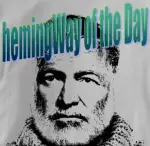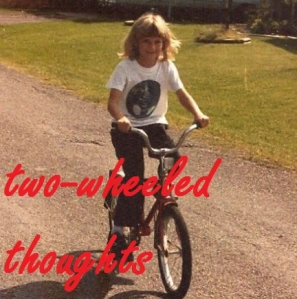Against the backdrop of New York City’s theater scene, a young woman grapples with the line between life and art in this memorable debut, lush with darkly elegant detail.
Alexis Soloski’s Here in the Dark is a thrillingly dark psychological drama, set in the least visible part of the spectacle of theater. Vivian Parry, 32-year-old theater critic for an important New York City magazine, carefully rations her vodka and sedatives to keep clear of the grasp of the “therapists I’m occasionally required to see.” She holes up in her Manhattan studio apartment, writing and editing in between shows. Readers quickly understand that Vivian is avoiding an unnamed trauma. In the audience–anonymous, with pen and notebook poised–is the only time she is remotely okay: “When I’m in the dark, at that safe remove from daily life, I feel it all–rage, joy, surprise. Until the houselights come on and break it all apart again, I am alive. I know myself again.”
It’s an act: “I am, of necessity, an imitation of myself–a sharp smile, an acid joke, an abyss where a woman should be. For a decade and more I have allowed myself only this lone role, a minor one: Vivian Parry, actor’s scourge and girl-about-town. I don’t play it particularly well.” Seeking a crucial promotion, she reluctantly agrees to an interview with David Adler, an eager graduate student and a man she belatedly suspects may be acting a part, too. “I consider myself a superlative judge of theater and life and the crucial differences between,” she thinks. “But David Adler has shaken that certainty like a cheap souvenir snow globe.” Following their odd and fateful meeting, Vivian finds herself inexorably caught up in intrigues involving a missing person, a dead body discovered in a park, an abandoned fiancé, Russian gangsters, Internet gambling, and more. The line between performance art and “real” life begins to blur still further. Vivian is heavily reliant on drink and pills; it would be easy to mistake her increasing sense of danger for paranoia, but readers can’t deny the threats slipped under her door.
Soloski, in Vivian’s clever, moody, sardonic voice, envelopes readers in details richly laden with subtext. Seasonal decorations include “cardboard Santas leering from store windows, snowflakes hung like suicides from every lamppost.” A large man has “a chest that would intimidate most barrels.” Of Justine, Vivian’s forceful best (and perhaps only) friend: “There are sentimental tragedies shorter than Justine’s texts.” Vivian’s fragile reality fractures in sleek, stylish prose. Here in the Dark is a carefully wrought, slow-burning psychological thriller: as numb as Vivian keeps herself, the terror surges to a crescendo, her wits and understanding of what is real pitched against an unknown foe.
This riveting first novel offers building momentum and looming horror with an entrancing and troubled protagonist and the most sophisticated of settings. Here in the Dark is frightening, delicious, engrossing, and unforgettable.
This review originally ran in the October 16, 2023 issue of Shelf Awareness for the Book Trade. To subscribe, click here.
Filed under: book reviews | Tagged: psych drama, Shelf Awareness, theatre, thriller | Leave a comment »





















